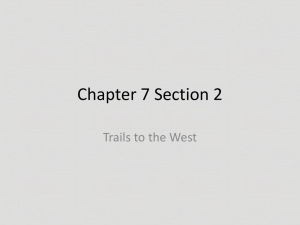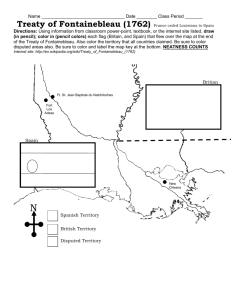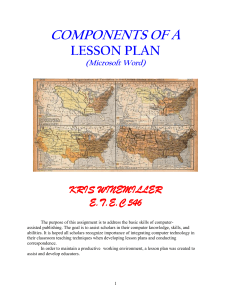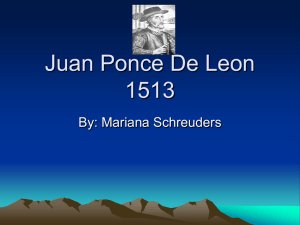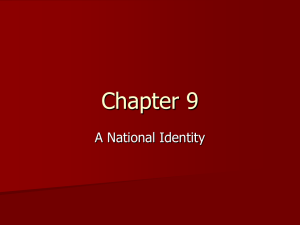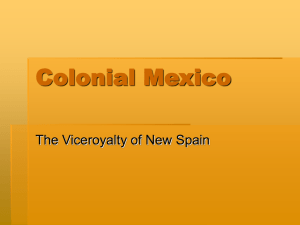Chapter 7 Section 2
advertisement
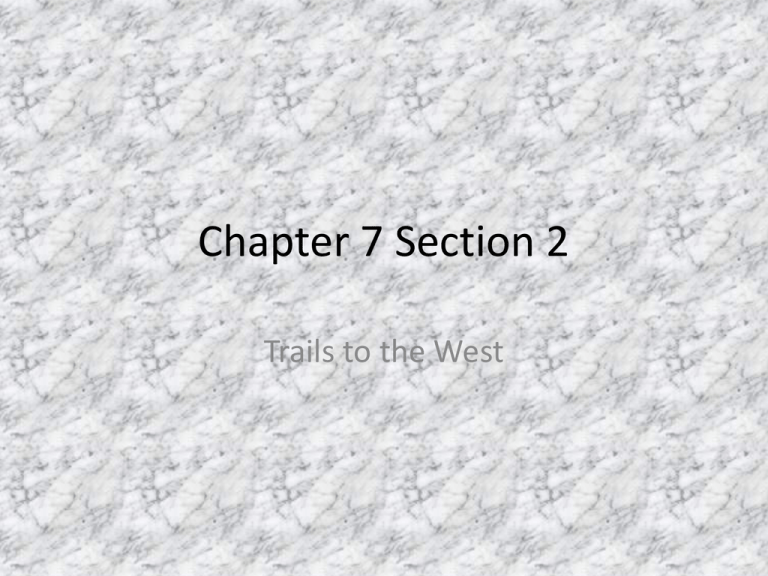
Chapter 7 Section 2 Trails to the West Trans-Appalachia • The area west of the Appalachian Mountains • Attracted people that wanted to escape overcrowding What areas did Americans settle in the early 1800s? • • • • Kentucky Indiana Ohio Michigan Territory Pinckney Treaty • Set southern boundary of the U.S. (Left Florida to Spain) • U.S. citizens free to use Mississippi R. through Spanish territory • Spanish and the U.S. would control Native Americans in their own territories Adams-Onis Treaty • Spain agreed to cede (give up) Florida to the U.S. • Established border between Louisiana Purchase and Spanish land in the West • U.S. handed over huge portion of current territory in SW to Spain Why did Spain cede Florida to the United States? • Americans already occupied Florida • Spain saw little hope of keeping Florida – so they decided to get whatever they could in exchange for the land they would lose anyway Manifest Destiny • Belief that it was the United States to possess the entire North American continent Oregon Country • Northern California to southern border of Alaska – – – - Mountainous Forested Fertile valleys Claimed by the U.S., Briatain, Russia and Spain - Russia and Spain eventually back out Mountain Men • Men that roamed the Rocky Mountains in search of beaver pelts – Adopted Indian ways – Married Indian women – Used Indian trails that led to Oregon and California How did Manifest Destiny shape American attitudes regarding the Oregon Country? • Americans began to believe that it was their right to possess the Oregon Country – This led them to aggressively pursue the acquisition of this territory. Oregon Trail • The main route across the central plains and Rocky Mountains – Could take 4 to 6 months – $500 to $1,000 to make the trip Santa Fe Trail • Route traders used to get goods to Mexican Territory • This would Ultimately carry many Americans to Southern California California Gold Rush • January 1848- Gold discovered • 4,000 prospectors there by August • Attracted settlers to California • California: 14,000 residents in 1848; 200,000 by 1852 Describe the typical “Forty-niner” Ghost Towns • Mining towns boomed during the gold rush • People left when the mines stopped producing towns slowly decayed and died. What were some consequences of the California Gold Rush? Consequences of the Gold Rush • Brought hundreds of thousands of people to the state • Transformed San Francisco to a major commercial center • Destroyed much of what was left of Native American Cultures How do you think the migrations of Native Americans was different than those of European descent? • Most Native American migrations were forced • White settlers and immigrants migrated because they chose to.
